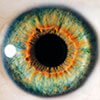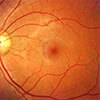Uveitis
Inflammation Includes Various Symptoms
Uveitis is a term that means inflammation of the eye. There are many subtypes of ocular (eye) inflammation that are classified by the specific location of the inflammation.
For example, Anterior (front of the eye), Posterior (back of the eye) and Pan (all layers of the eye) are the most common subtypes. Your doctor may use several others to describe the locations of the inflammation.
Uveitis symptoms may include light sensitivity, blurred vision, pain, floaters and redness of the eye. A case of “pink eye” may actually represent a more serious problem than expected. If your eye becomes red or painful, you should see an eye care specialist.
Careful Exam Important to Finding Cause of Uveitis
In many cases of uveitis, the underlying cause remains unknown. Sometimes your eye doctor is able to determine a cause such as an infection or underlying illness that requires specific types of treatment.
A careful eye examination by an eye doctor is extremely important when symptoms occur. He or she may order blood or skin tests, or imaging tests such as x-rays or MRI’s to help identify the cause.
Uveitis is a serious eye condition that may cause scarring in the eye; therefore it needs to be treated quickly to prevent damage to the vision. Anti-inflammatory and dilating eye drops can help to reduce inflammation and pain in most cases. For more severe uveitis, oral medication, injections or surgery may be necessary. If left untreated, inflammation inside the eye caused by uveitis may cause permanent vision damage or blindness.
Uveitis can be associated with these complications:
- Glaucoma or increased eye pressure
- Cataracts
- Neovascularization (growth of new abnormal blood vessel)
- Blindness from scarring
What is Uveitis









